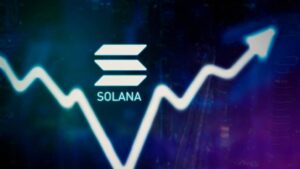Solana is a type of cryptocurrency or digital currency that exists exclusively online. Solana was initially released in April 2019 and started trading at less than $1 per coin. Since then, its price has risen remarkably fast, rising to above $200 before falling alongside other cryptocurrencies for most of 2022. As of September 2022, Solana traded for about $35. It’s among the top 10 largest cryptocurrencies by total value, according to CoinMarketCap.com.
Here’s what Solana is and what you need to know about how it works.
What is Solana?
Solana is one of the most popular cryptocurrencies among more than 10,000 that currently exist. The cryptocurrency platform is called Solana, while the individual unit is called a sol.
Created by Anatoly Yakovenko, Solana operates on a decentralized computer network using a ledger called blockchain. This blockchain database manages and tracks the currency, and effectively records every transaction that’s ever occurred in it, like a long running receipt. The computer network records the transactions in the currency and verifies the data’s integrity.
This decentralized setup makes the network more robust, and users can make transactions without the need of an intermediary. Solana calls itself the fastest blockchain in the world and touts its ability to verify 65,000 transactions per second at a cost of less than a penny each.
While many people think of crypto coins as only a currency, it’s useful to think of crypto as a token that can power or enable other apps on the platform. For example, Solana can power smart contracts, decentralized finance apps, NFTs and more.
What does Solana do?
Solana can power several applications that offer a variety of features:
- Currency: With a cryptocurrency wallet, you can use Solana to send or receive the coin or transfer it in exchange for goods and services.
- Smart contracts: Smart contracts are apps that automatically execute the terms of the contract when its conditions have been fulfilled.
- Non-fungible tokens (NFTs): Often associated with digital art, NFTs can be powered with Solana, allowing artists and others to sell them to consumers.
- Decentralized finance: With Solana, you can create and use permission-less payments, ones that can avoid centralized or government control.
- Digital apps: Besides its other functions, Solana supports the development of a range of other apps, including games, investing, social media and more.
- Proof of history approach: In addition to a proof of stake approach to validate transactions, Solana timestamps them, eliminating the ability to re-order transactions to a validator’s advantage. This helps make Solana a “censorship-resistant” network.
Again, think of Solana as a token that can power various apps rather than merely as a currency that transfers monetary value from one person to another.
Where do Solana coins come from?
As of September 2022, there were about 353 million sol in circulation. Like many coins, Solana has a limited annual issuance, as coins are rewarded to those supporting the cryptocurrency. Solana began by increasing its supply by 8 percent annually, but that figure declines 15 percent each year, until it ultimately reaches 1.5 percent annually, which is its fixed ongoing issuance.
This issuance schedule contrasts markedly with other popular cryptos such as Bitcoin, which has a total fixed supply of 21 million coins, and Dogecoin, which has no limit on issuance.
Solana uses a “proof of stake” system to verify transactions, manage its coin supply and create new coins. To participate in a proof of stake system, you need to own the cryptocurrency but then you can earn rewards for helping to operate the system. By staking tokens with a validator, you’re putting trust in the validator to authorize transactions. However, as with other proof of stake systems, stakers can lose money if validated transactions don’t meet the system’s rules.
For verifying transactions, validators receive staking rewards in the form of new coins and take a cut of the rewards as a commission. They then pass on the rest of the reward to those who have staked with them, proportionally to their ownership interest.
Is Solana a good investment?
Solana rose quickly after being introduced, before tumbling alongside other cryptocurrencies and risky assets as the Federal Reserve started raising interest rates. Early buyers of Solana likely made money, but that’s been more of a challenge in recent months. But instead of looking at recent gains or losses and suffering from fear of missing out, it’s vital to understand what you’re buying. From that perspective, traders are buying something that’s not backed by assets or cash flow.
That’s a key difference between cryptocurrency and stocks. A stock is a fractional ownership interest in a business and its success over time relies on the growth of the underlying company. If profit grows, the investment is likely to work out well. Stockholders have a legal claim on the assets and cash flow of the business, and the business may even pay dividends to investors.
In contrast, Solana – like most popular cryptocurrencies – is not backed by any fundamental assets. What propels them is the optimism and speculation of other traders. Traders think they can sell the crypto coin to other traders later for a higher price, or what’s called the “greater fool theory of investing.” So speculation is the driving force behind the price rise in digital currencies.
If optimistic traders evaporate, cryptocurrency has nothing to buoy it. It’s a key distinction that keeps many investors, including the legendary Warren Buffett, away from cryptocurrency.
Source URL ; https://www.bankrate.com/investing/what-is-solana/
- prwires
- Jordan Narway
- United States







